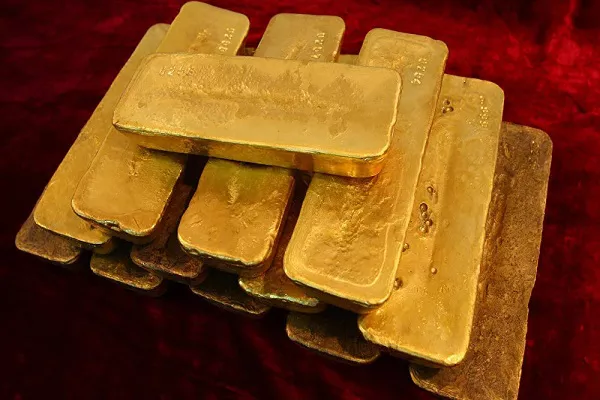Gold has fascinated humanity for centuries, valued not only for its beauty but also for its enduring worth. Among the various types of gold used in jewelry, 18-karat gold stands as a popular choice due to its ideal balance of durability and luxurious shine. However, as with any precious metal, counterfeit 18-karat gold exists in the market. This article explores various methods and techniques to help you distinguish genuine 18-karat gold from imitations, ensuring that your jewelry and investments remain valuable and authentic.
Understanding 18-Karat Gold
Before delving into ways to authenticate 18-karat gold, it’s essential to understand what this term means. “18-karat” refers to the purity of the gold used in a piece of jewelry. Gold is a soft metal, and to make it more durable for everyday wear, it is often alloyed with other metals. The term “18-karat” signifies that the gold content in the alloy is 18 parts out of a total 24, making it 75% pure gold. The remaining 25% consists of other metals like copper, silver, or palladium, depending on the specific alloy used. This combination of metals gives 18-karat gold its characteristic strength and warm color.
Checking for Hallmarks and Stamps
One of the simplest ways to confirm the authenticity of 18-karat gold is by examining the hallmarks or stamps on your jewelry. Many countries have specific regulations regarding the marking of gold jewelry to indicate its karat purity. In the United States, for example, jewelry that is 18-karat gold is often stamped “18K” or “750,” signifying 75% pure gold content. However, these stamps can be quite small, so you may need a magnifying glass to read them.
It’s important to note that not all jewelry may be stamped or hallmarked. Vintage pieces, custom-made items, or pieces from regions with different hallmarking practices may lack these markings. In such cases, other methods can be used to determine the authenticity of the gold.
Conducting a Magnet Test
Gold is not magnetic, meaning it should not be attracted to a magnet. You can perform a simple magnet test to check if your 18-karat gold is genuine. If the piece is attracted to the magnet, it is likely not pure gold. Keep in mind that while this test can be useful for identifying fake gold items, it won’t provide information about the exact karat purity.
Performing a Scratch Test
The scratch test is a more advanced method to determine the authenticity of 18-karat gold. This test requires you to gently scratch the gold item in question on a piece of ceramic or unglazed porcelain. If the metal leaves a visible gold streak, it is likely genuine 18-karat gold.
However, this method can damage the jewelry, so it should be used as a last resort or with items you are willing to sacrifice for the sake of testing.
Assessing Weight and Density
Another way to distinguish real 18-karat gold from imitations is to assess its weight and density. Genuine 18-karat gold will have a specific weight and density due to its precise composition. This can be compared to known values for 18-karat gold, allowing you to make an educated guess regarding its authenticity.
This method, however, requires specialized equipment like a precision scale and a density testing kit. If you’re concerned about the authenticity of a valuable piece, consult with a professional jeweler who can perform these tests for you.
Conducting an Acid Test
The acid test is a more definitive way to determine the karat purity of gold. It involves using nitric acid to test the metal’s reaction. Genuine 18-karat gold will not react with nitric acid, while lower-karat gold or gold-plated items will show a reaction.
It’s important to note that the acid test can be destructive, as it involves scratching the gold piece and applying acid to the scratch. Therefore, it should only be used as a last resort and with items you are willing to potentially damage.
Seeking Professional Authentication
When in doubt, or if you possess valuable pieces of 18-karat gold jewelry or investments, it’s always advisable to seek professional authentication. Experienced jewelers and appraisers have the knowledge and equipment necessary to accurately determine the authenticity and purity of your gold items. They can also provide you with certificates of authenticity for your records.
Moreover, professional authentication is essential when dealing with antique or vintage jewelry, as these items may lack modern hallmarks and may have unique characteristics that require expert examination.
Conclusion
Authenticating 18-karat gold is a crucial skill for both jewelry enthusiasts and investors. Whether you’re looking to ensure the value of your personal collection or verify the authenticity of a recent purchase, there are various methods at your disposal. From inspecting hallmarks and conducting simple tests to consulting professionals, these techniques can help you confidently differentiate genuine 18-karat gold from counterfeit imitations.
Remember that while these methods can provide valuable insights, they should be used with caution, especially when dealing with valuable or sentimental items. When in doubt, always consult with an experienced jeweler or appraiser to ensure the accuracy of your assessment. With the right knowledge and tools, you can safeguard your investments and appreciate the beauty and lasting value of genuine 18-karat gold.


